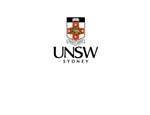
Stuart Khan Associate Professor, School of Civil & Environmental Engineering.
Stuart Khan Associate Professor, School of Civil & Environmental Engineering.
According to the EIS, around 37.5 gigalitres of water would be extracted from the target coal seams over the life of the project. Water production is generally not consistent over the life of a CSG well, but much greater volumes are extracted during the first few years, with significant declines thereafter.
The EIS describes the quality and management of produced water in Chapter 7. Somewhat unhelpfully, the salinity of the produced water is described in terms of electrical conductivity (in units of microSiemens per centimetre), rather than an actual salt concentration (in units of mg/L). It is stated that the average salinity is around 14,000 microSiemens per centimetre. The EIS states that “this level of salinity is approximately 30 percent of the salinity of seawater, which is around 50,000 microSiemens per centimetre”.